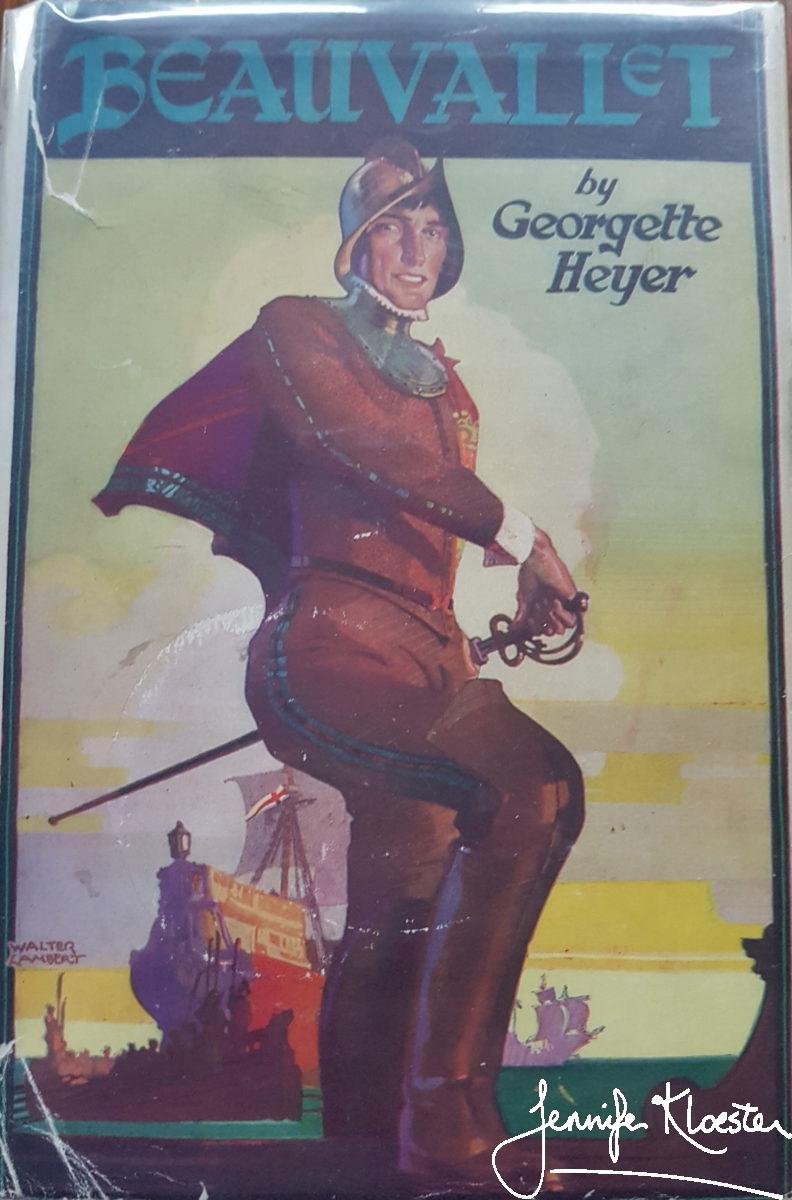
Writing far from home (again)
Georgette soon settled into life in Kratovo, the small village in Macedonia to which she and Ronald had moved in 1928 after their return from Africa. Their new home in Kratovo was an old Turkish house with a water supply that had been built in Roman times. Though not remote as their grass hut in Tanganyika, it was still a relatively simple life. While Ronald worked in the lead mines near the Bulgarian border, Georgette spent her days writing and reading. Her new book was to be a swashbuckling adventure story which she called Beauvallet. This would be her fourth historical romance for Heinemann and before leaving England for Macedonia she had rejoined the London Library so that she could still gain access to the books she needed for her research. The London Library had an overseas service and would send books to their members living in Europe. A ready supply of reference books enabled Georgette to continue writing the historical fiction that she loved. She was a conscientious writer who did her research with the aim of giving her readers a vivid (if somewhat superficial) sense of an era and even in her most light-hearted novels she was careful to go to the sources for the ephemeral detail that made even her earliest historical romances convincing.

An adventurous spirit
She had an adventurous spirit in those early years of her marriage which is reflected in the novel she wrote in Kratovo. Beauvallet is set during the reign of Elizabeth I, when England was in conflict with Spain and Sir Francis Drake ruled the seas. Another of Heyer’s swashbuckling adventure stories, it stars the captivating Sir Nicholas Beauvallet, a direct descendant of Simon Beauvallet, the hero of Georgette’s 1925 novel, Simon the Coldheart. She must have enjoyed writing Beauvallet for her pleasure is evident in the detailed and humorous family tree which she devised for the first edition of Beauvallet and which she headed: ‘Pedigree of the House of Beauvallet for those readers who are Interested in the Fortunes of the Descendants of Simon the Coldheart’. In it she offered her readers such entertaining tidbits as ‘Simon died of the Stone, which he Suffered with Great Fortitude’ and that he was ‘frequently heard to Deplore the Effeminacy of the Younger Generation’.
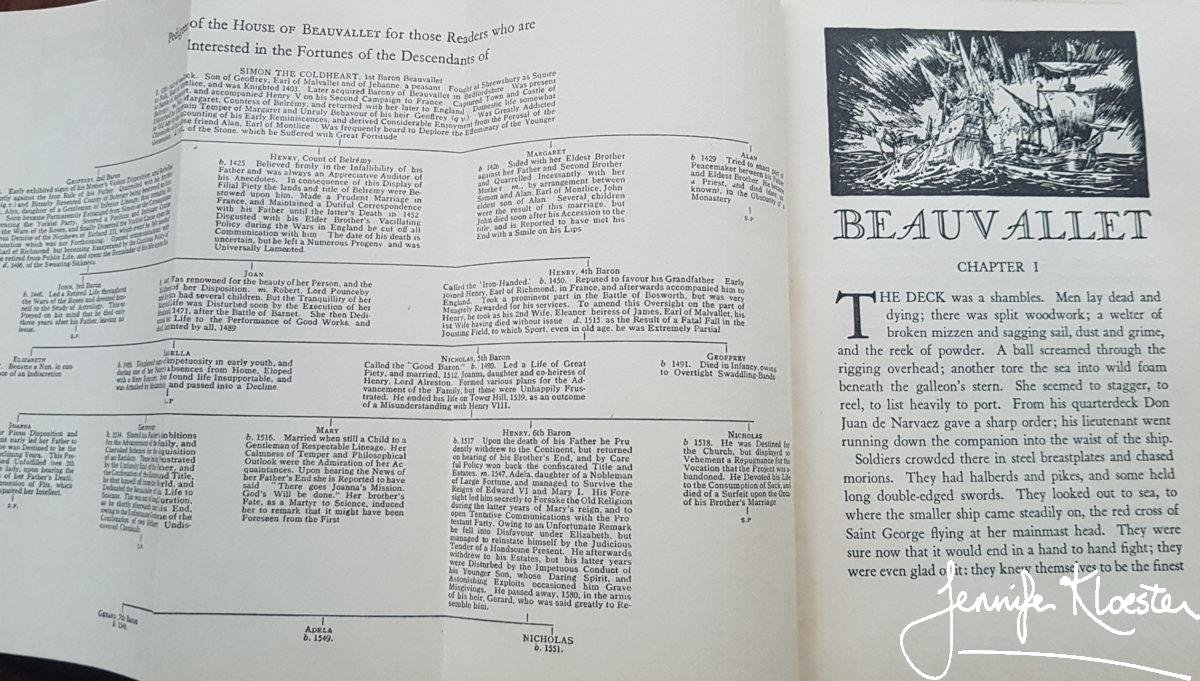
El Beauvallet who bit his thumb at Spain!
Nicholas Beauvallet is one of Heyer’s vivid characters, whose many impossible feats become believable because the writing is so good. Known to the Spanish as ‘El Beauvallet’ and ‘Mad Nick’ to his men, he is a master swordsman, a pirate and a gentleman, with a sparkling sense of humour that sees him through all of his many adventures. A friend to Drake and a terror to the Spaniards, the story opens with ‘a bloody, ravaging tornado of a sea fight, in which a mighty galleon is badly beaten by a small English vessel.’ This small vessel is the Venture, Sir Nicholas’s own ship, with which he defeats the Spaniards and takes prisoner the beautiful Dominica and her father, a former Spanish governor of the West Indies. Of course, Sir Nicholas falls instantly in love with the lady and against all odds escorts her and her father back to Spain, promising to come for her within a year and take her back to England as his wife.
The USA edition – doing Georgette proud
While Heinemann published an attractive edition in 1929, in the United States, Longmans did Georgette proud by producing a stunning edition of Beauvallet with endpapers of a ship in full sail and a facing title page with a picture of Sir Nick in Elizabethan dress and another picture of a ship on the title page. Longmans designed an elegant new cover with Beauvallet riding a rearing horse and also reproduced the fold-out family tree. A second, elegant brown-and-gilt edition also came out that year. Beauvallet received good reviews in America, with a glowing account of the novel in the Boston Evening Transcript:
‘For several years Georgette Heyer has been proving herself a master of romantic fancy-dress fiction. What she does is always right, always highly flavored of her period, so that in some odd fashion the whole era is actually alive before you, and that with few descriptions. It is so easy that you are assured of long study in preparation, while there is no faintest trace of effort.’
Isabelle Wentworth Lawrence, “Brave Knights and Beautiful Ladies. Georgette Heyer Writes a Novel of Swashbuckling Adventures in England and on the Spanish Main”, Boston Evening Transcript, 18 April 1930.
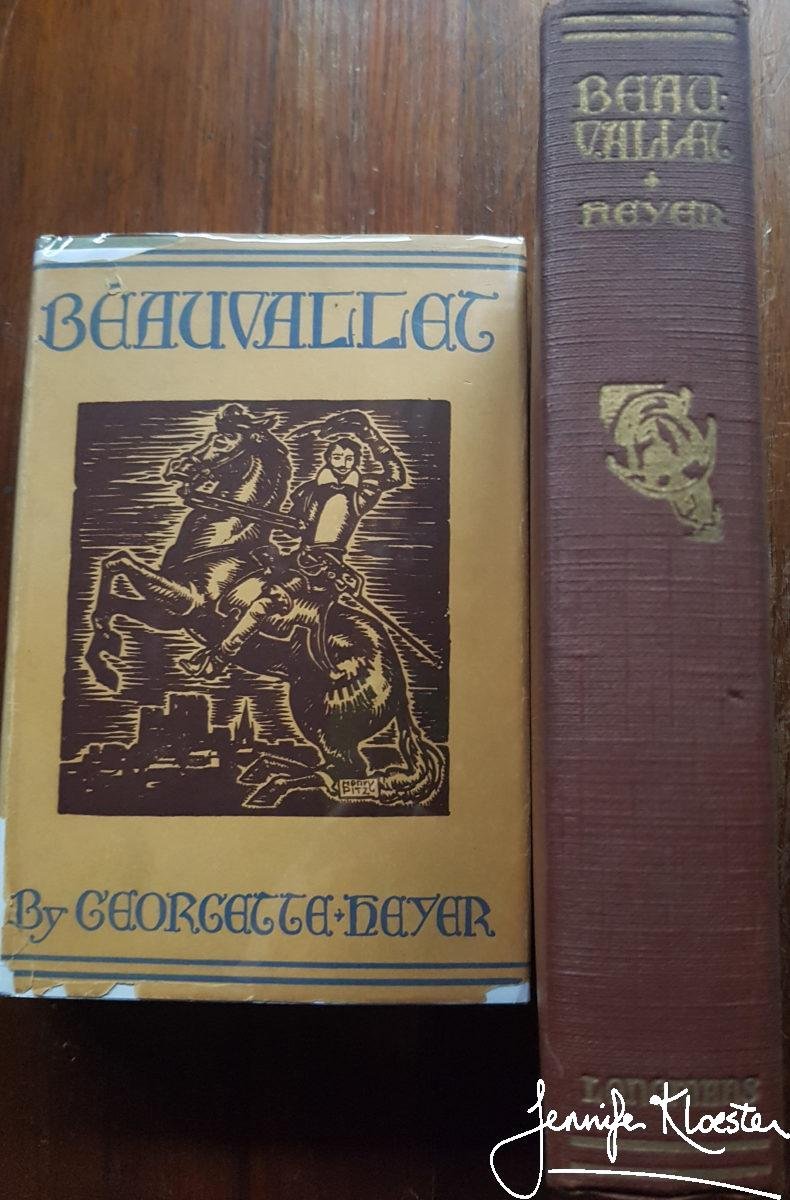
The American first edition, published in February 1930 by Longmans. 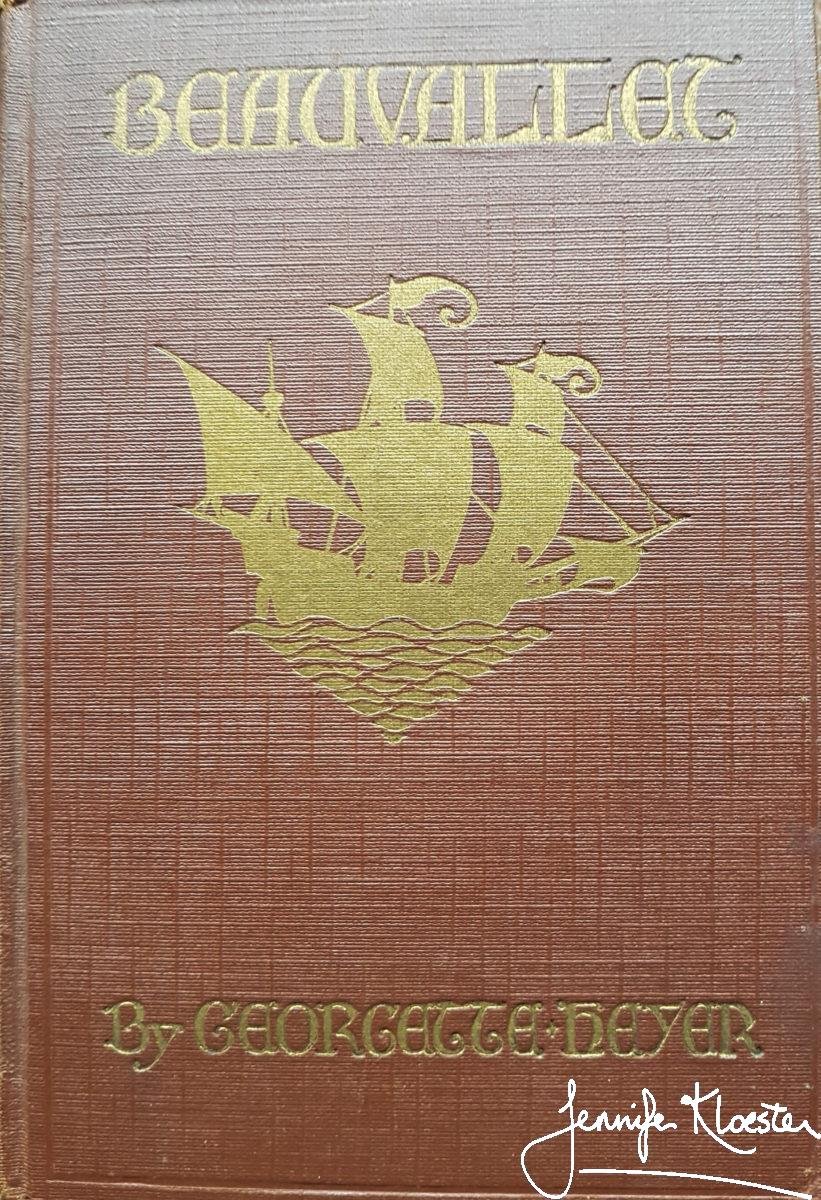
A different American first edition.
Georgette enjoyed many aspects of her life in Macedonia: it was simpler and free of the demands of her extended family; she and Ronald were happy in each other’s company and they took walks together and sometimes went horseback riding around the district. Occasionally they would make the trip to the capital, Skopje, and there join other ‘Britishers’ for drinks or dinner. One night they to the local cinema in Kratovo, not to see a movie, but instead to see it burn down after the owner, having insured the building for a handsome sum, announced to the town that he would set it on fire and invited everyone to come and watch. The whole village turned out as if for a party and when the time came for the conflagration the police merely ensured that everyone was clear of the building and then stood back to watch with the crowd as the building went up in flames. Georgette later reported that the cinema owner had collected his money from the insurance company and that everyone had enjoyed a very good time! She did not have such a good time in the dentist’s chair, however. In fact, Georgette Heyer almost died in Kratovo when the gas line became blocked and she turned blue before the anaesthetist noticed the problem and fixed it. By the end of 1929, the Rougiers had decided it was time to go home, but not before Georgette had begun writing a new novel (more on that next week).
“Our joint effort!”
Ronald had a hand in Beauvallet, though whether he helped Georgette with the plot as he would in some of her later detective novels, or whether he assisted with research and the historical detail, is impossible to tell. That he took a continuing interest in his wife’s writing is clear. After their marriage and her father’s death, Ronald became Georgette’s first reader and critic. She valued his opinions and admired his knowledge of history as well as his ability to hunt up elusive facts or bits of ‘period colour’ which she could use in her writing. Living in Macedonia may have meant depending on Ronald more than usual for when the book came out she inscribed his copy of Beauvallet with an appropriate acknowledgment: ‘”To Wonaldy-pet, Our joint effort”‘ and signed herself ‘George’ – a name reserved for use by only her closest friends and relatives. Georgette and Ronald understood each other very well. Ronald’s practical support when she was writing books such as Beauvallet and laterThe Conqueror also meant that he had a legitimate stake in his wife’s work.
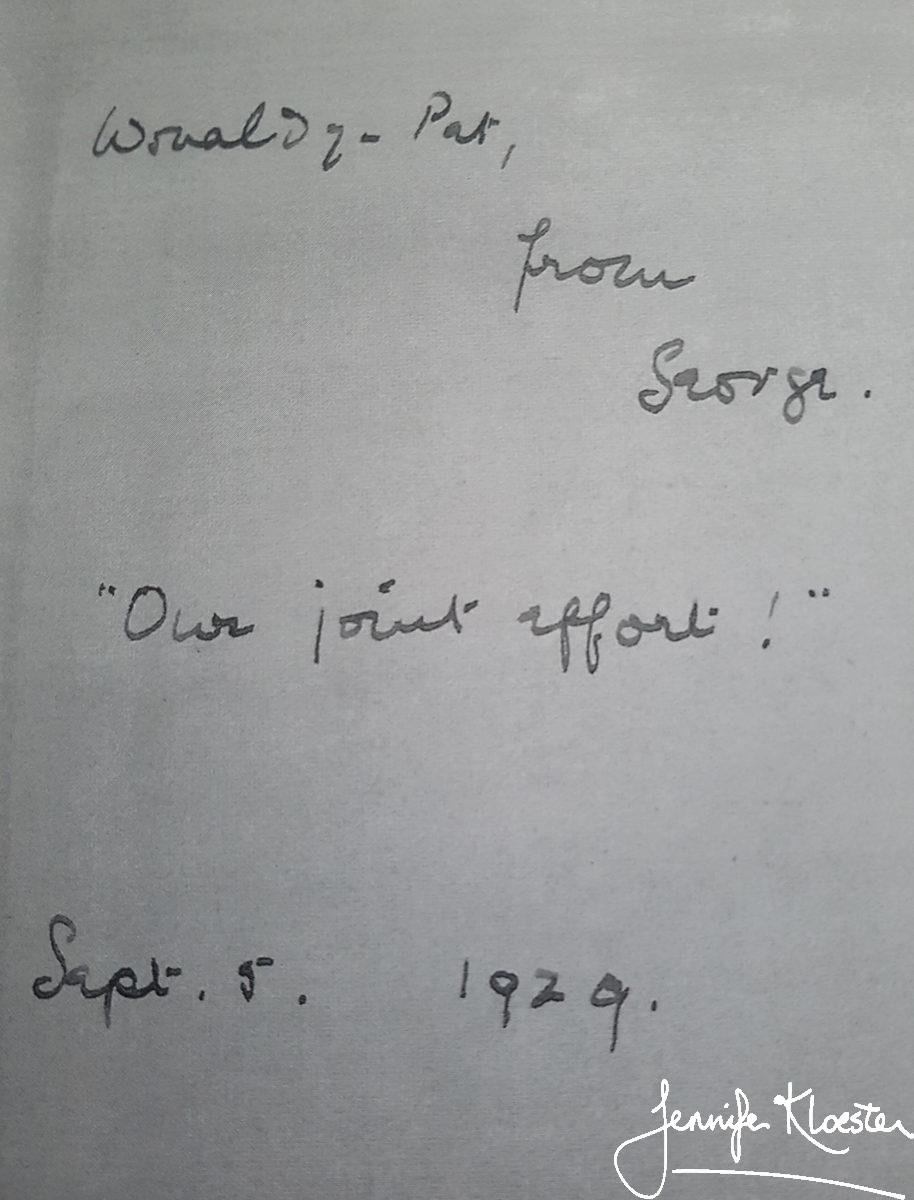
A great deal!
Georgette finished Beauvallet while in Macedonia and posted the manuscript home to her publisher in time for September publication. This was her fourth historical novel for Heinemann and this time they paid her an advance of £200 against royalties. She had received only a £50 advance for Simon the Coldheart and for The Masqueraders, so this fourfold advance was a clear indication of her steadily increasing sales and her growing reputation. As her career advanced, with each new novel her agent, L.P. Moore, had sought a bigger advance and better royalties. In 1929, with Beauvallet, he brokered terms which gave Georgette 15% on the first 3,000 copies sold, 20% on the next 7,000 copies and 25% on all copies sold above 10,000. These were remarkable terms that would be an author’s dream today! More than ninety years later, Beauvallet is still selling.



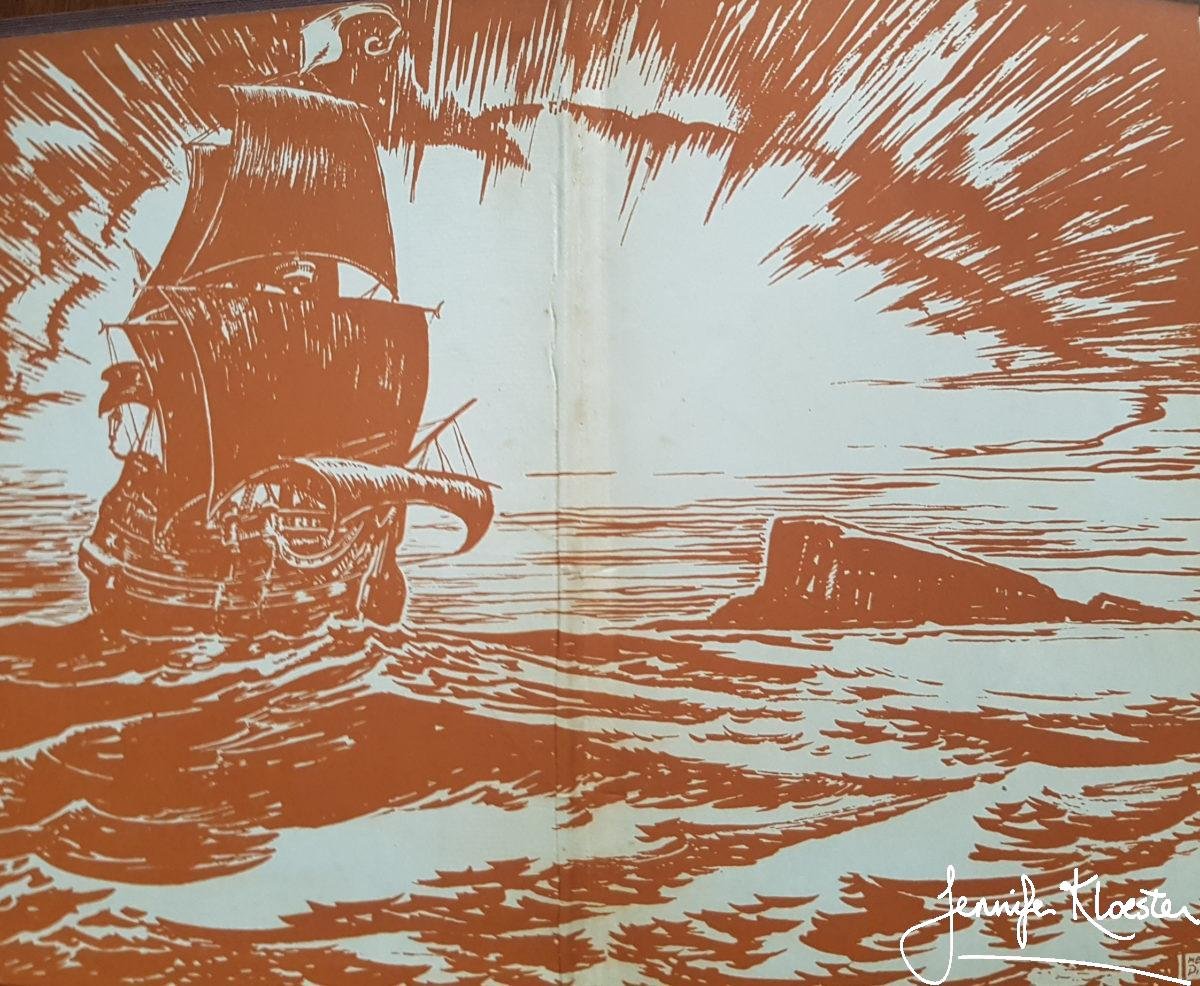
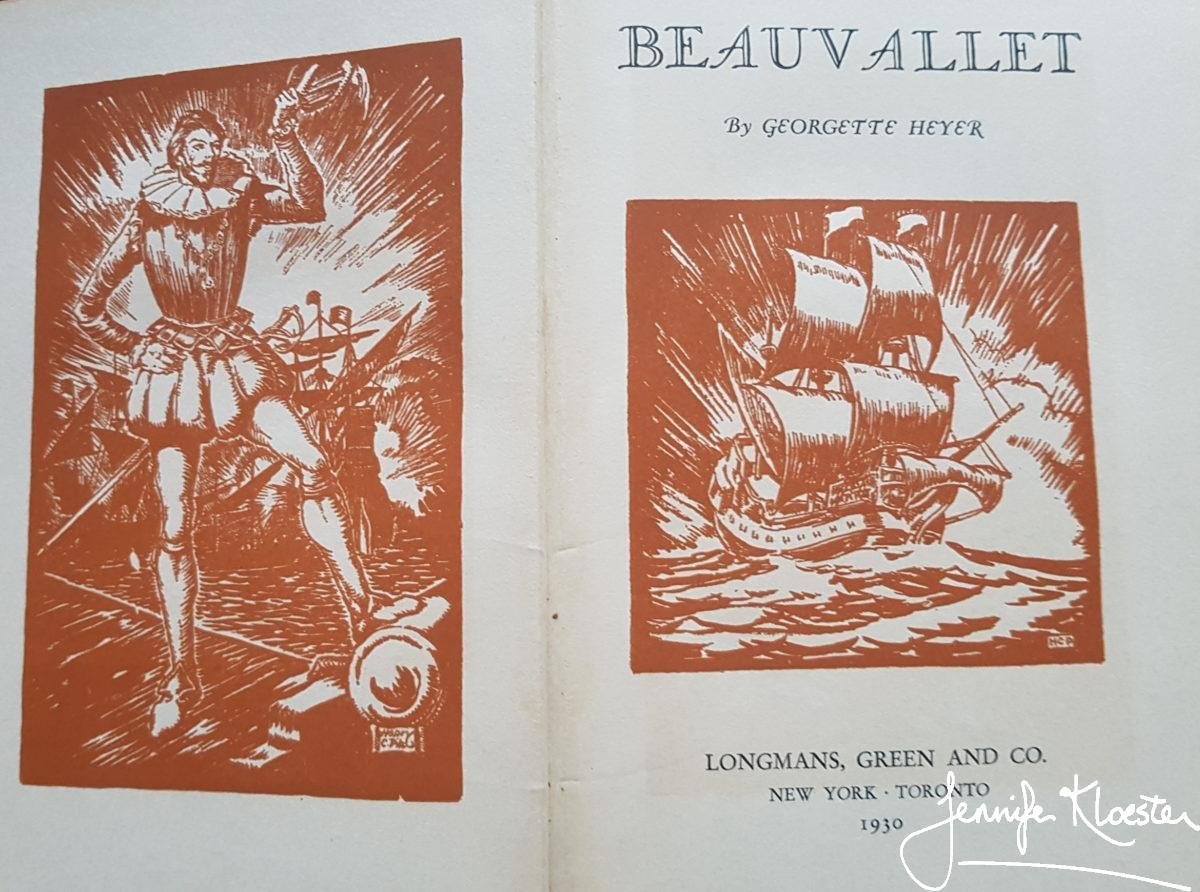


4 thoughts on “Beauvallet – a great adventure”
Thank you for this informative review! I would love to see that family tree in more detail – would it be possible to scan it so it could be read?
Yes, I’ll see if I can scan it and put it up so you can see it more clearly. Thanks for the suggestion and for your response. Much appreicated.
Fascinating background! Your research on GH’s life and her publications is much appreciated.
Thank you so much for taking the time to write. It really helps to know that it’s appreciated as it takes me ages (though I’m improving!) to write each one. The thing is that I have so much research material that’s never seen the light of day and I really want to share it with readers. I think it will take me until next year to post everything. I hope you enjoy Barren Corn this Friday.